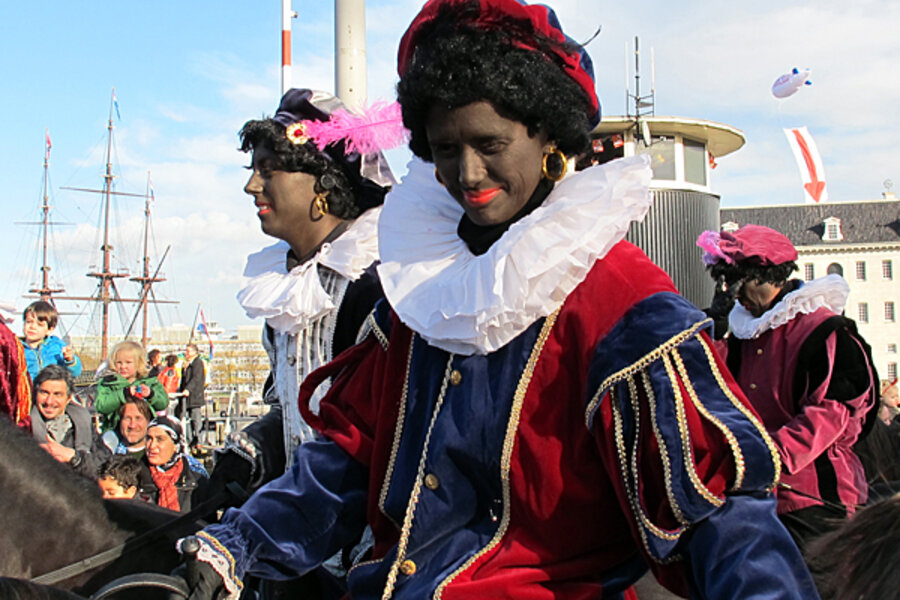A traditional Sinterklaas debate: Is 'Black Pete' racist?
Loading...
| Amsterdam
Tonight, as is the tradition on Dec. 5 in The Netherlands and Belgium, many children will receive gifts from Sinterklaas, or St. Nicholas. But there's another, more recent tradition that accompanies the holiday as well: the debate over Sinterklaas's traditional helper, Zwarte Piet, or "Black Pete."
For decades, the celebration of Sinterklaas has been surrounded by a discussion about whether Black Pete, who is traditionally portrayed by whites in blackface and wigs of curly black hair, is racist. This year is no different: One of Amsterdam's aldermen on Monday said that it is time to say farewell to the saint's black servant.
“When the Sinterklaas celebrations began, there was no Black Pete, and it's time to continue without Black Pete,” Andrée van Es said on Monday in the Amsterdam newspaper Het Parool.
Sinterklaas is a tradition that has been traced back as far as the 15th century, and originally, Black Pete was a cruel man who would punish children who didn't behave. But it wasn't until Jan Schenkman's popular book "Saint Nicholas and His Servant" was published in 1850 that Sinterklaas – and Black Pete – truly became a national celebration in The Netherlands.
Since the 1930s, the country has held an official parade where Sinterklaas is accompanied by multiple Black Petes. For a long time, these Petes also had curly hair and big earrings, and talked with an accent of Surinam – the South American country that was a Dutch colony until 1975.
In the 1980s, several Surinamese action groups called for the end to Black Pete, and while they did not stop the tradition, they did prompt efforts to change it: for example, there were some attempts to make Petes of various colors in the 1990s.
The traditional explanation for Pete's blackness is derived from the fact that he climbs down the chimney to put gifts in the children's shoes, thereby covering himself in soot. Ms. Van Es suggests that this version should be more prominently reflected in the Black Pete's appearance: just some dark smudges on the face, instead of a completely painted black face.
Even some people closely associated with the celebration see room for change. Actor Bram van der Vlugt, who played Sinterklaas on national television from 1986 to 2010, recently noted in an interview that the helpers on TV have already lost their Surinam accents. “I have also argued for just calling them Pieten instead of Zwarte Pieten. The tradition has been modified before.”
To a foreigner's eye, this all might seem quite absurd. Two American stand-up comedians, Greg Shapiro and Pep Rosenfeld, have been living in the Netherlands for around 20 years, and still are offended by the existence of Black Pete.
“I just can't get used to it," Mr. Shapiro told newspaper nrc.next in a recent interview. "It's an army of black slaves!”
The comedians have put their frustrations in a comedy show, "There’s no Such Thing As Sinterklaas," which includes their plea for a Black Pete reboot.
RECOMMENDED: What do you know about Christmas? Take the quiz







